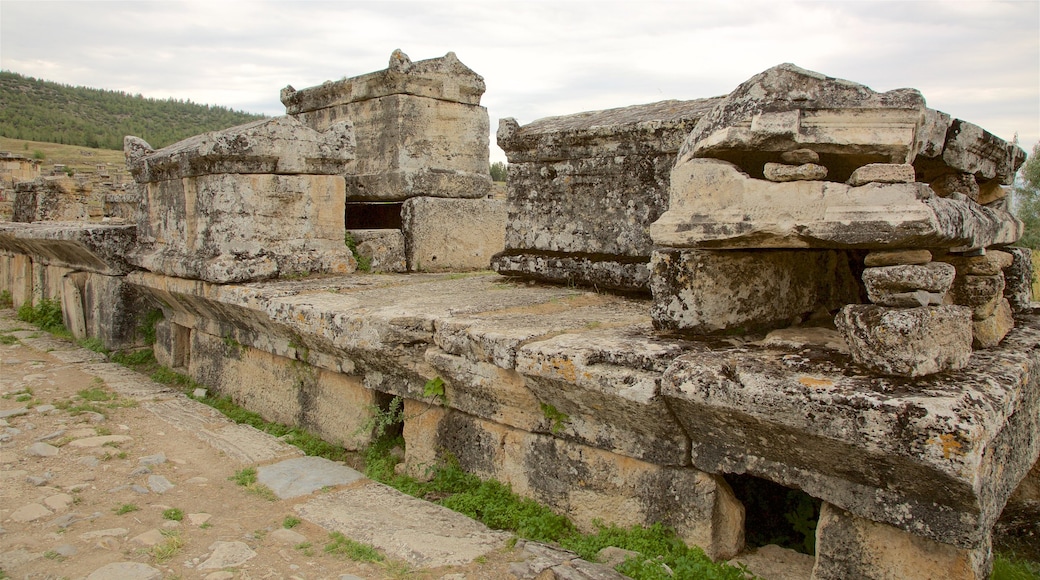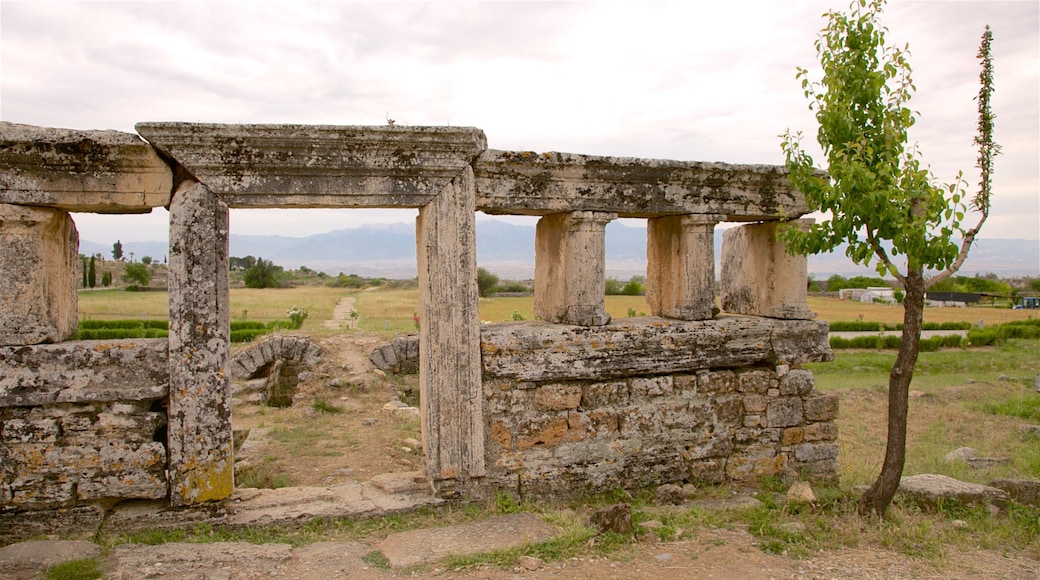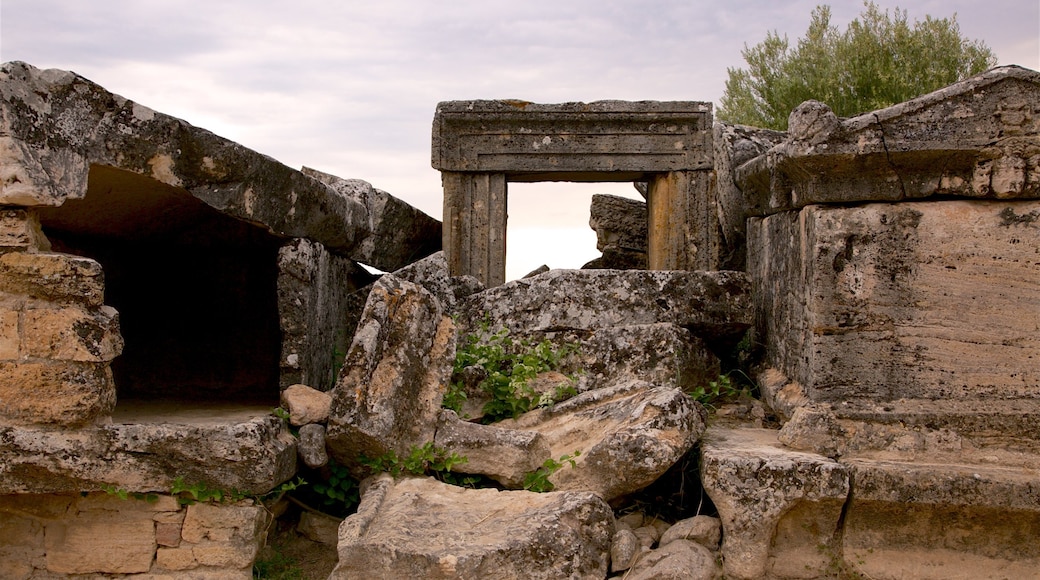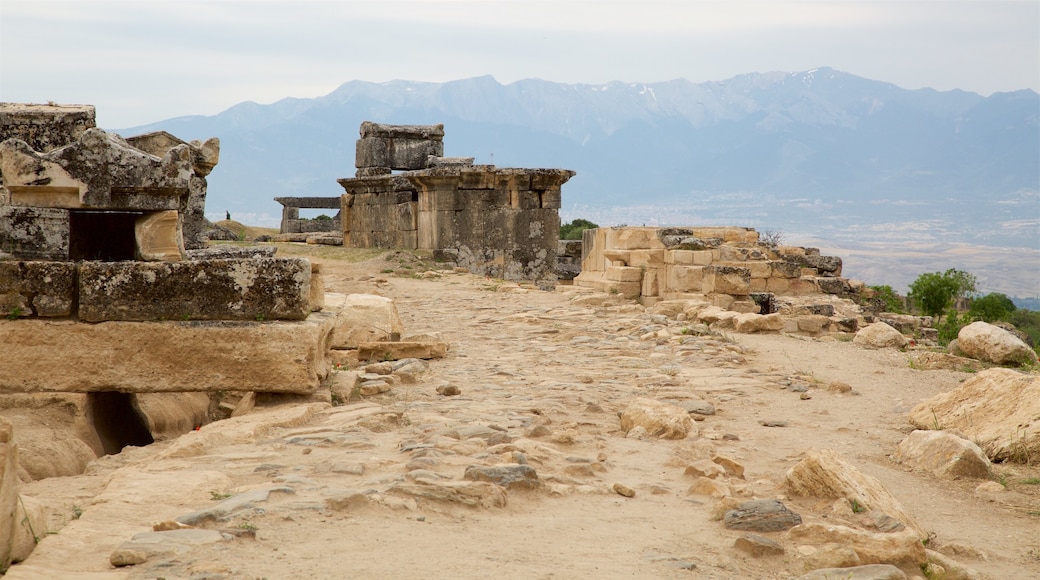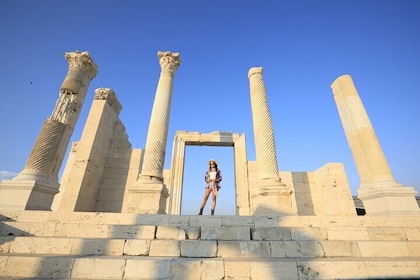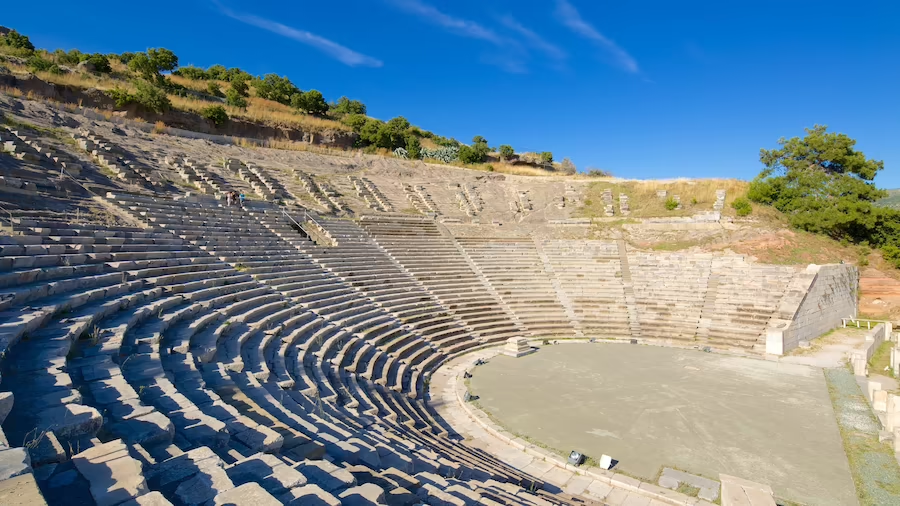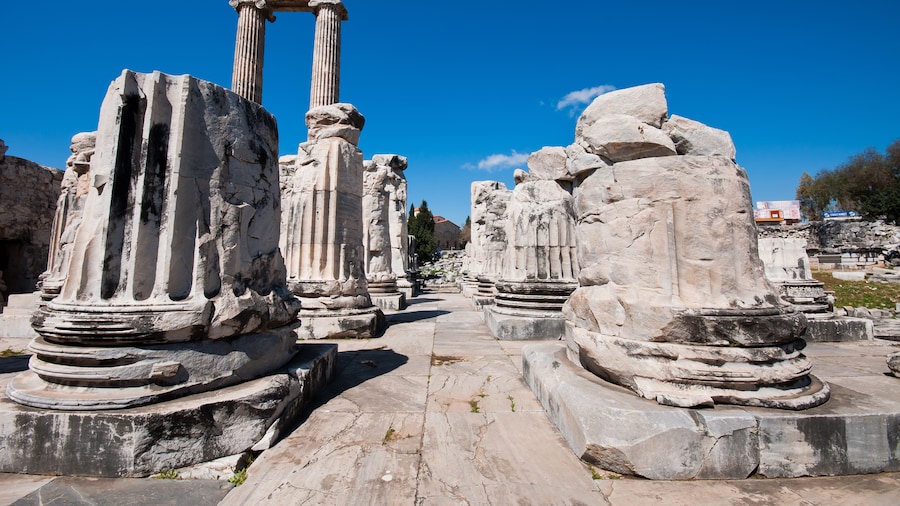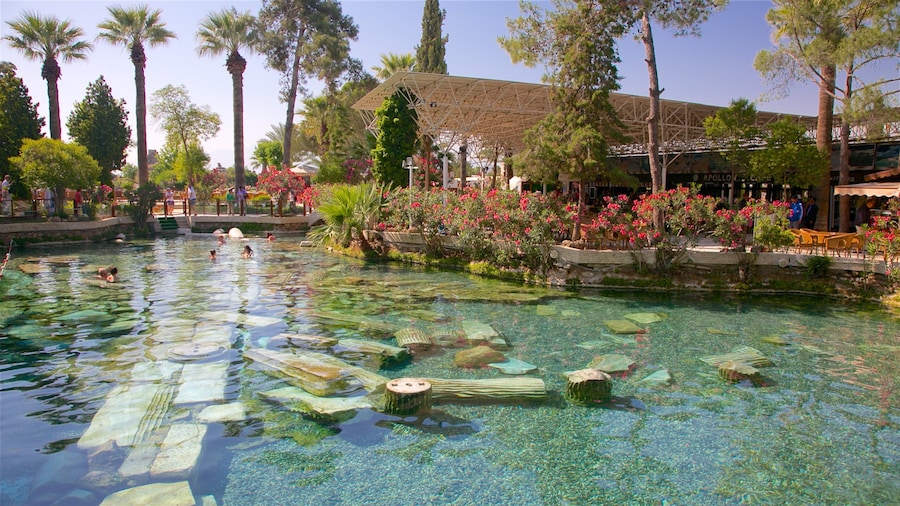Uncover the mysteries behind ancient funeral rites in a dizzyingly vast cemetery, which offers an astonishing insight into beliefs about death.
One of the highlights of the ruined city of Hierapolis is its huge Necropolis, a burial ground covered in limestone and marble tombs. The Necropolis is far larger than the size of the city would necessitate, as many saw this as a sacred or important destination. Learn about how different civilizations viewed death and the afterlife through graves from different eras of history. The scope of the cemetery makes it one of the most important sites of its kind.
The name Necropolis comes from the Greek word meaning “city of the dead,” but is used to refer to cemeteries. Hierapolis was founded in the 2nd century B.C. and some of the graves here are from the late Hellenistic period. Look for sarcophagi from the Roman era and the Byzantine Empire, when the city became an important religious site for the Christian state.
Wander around the Necropolis area, which is over 1 mile (2 kilometers) long. Ornately decorated tombs, some carved from marble, reflect the diversity of the people buried here, who would have come from different places around the empire. Inscriptions denote the status of the deceased in life.
Some graves contain several rooms and house whole families, while others are under mounds that you can enter. Find sarcophagi that look like small houses, demonstrating the value placed on leaving a legacy in this era.
Take some time to explore the rest of Hierapolis. A martyrium dedicated to St. Philip, a disciple of Jesus, as well as a ruined cathedral, shows how Hierapolis gained religious significance when the Roman Empire converted to Christianity. Earlier structures such as the Temple of Apollo and a vast theater are even earlier monuments from the city’s heyday as a Roman spa town.
The Hierapolis Necropolis is part of the wider Hierapolis archaeological site, north of the town of Pamukkale and 20 minutes away from Denizli. Drive here and use the on-site parking. The Hierapolis Necropolis is open throughout the year.
